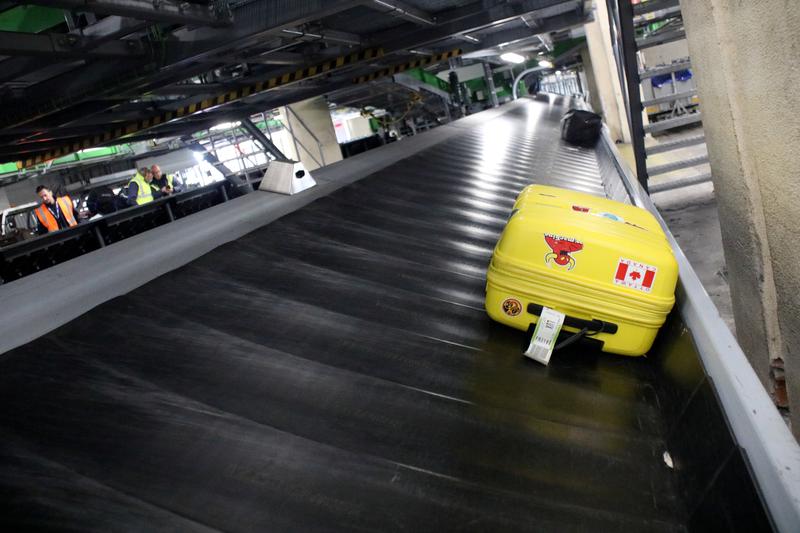New baggage system at Barcelona Airport: From check-in to handling in 3.5 minutes
7,200 pieces of luggage can be checked in an hour

Baggage is loaded onto a conveyor belt just a few meters from the check-in counters in a restricted area. It goes through an automatic identification process and is then distributed to the aircraft, all in just three and a half minutes. This is the new automatic baggage control system at Barcelona Airport’s Terminals 1 and 2, which was installed six months ago.
Behind the "Restricted Access" signs is the Automated Baggage Transport System (SATE), a 2.1-kilometer conveyor belt that can analyze 7,200 pieces of baggage per hour.
“When we travel, this is the part that the passenger doesn't see,” says Sheila Muñoz, head of the Special Installations Department at Barcelona's El Prat Airport.
A total of twelve screening machines use the most advanced CT scanning system, like the one used in the medical field.
According to Aena, the Spanish airport management company, the new system improves baggage screening and ensures a more fluid baggage handling process.
The new system meets the requirements of the new EU regulations for the Explosive Detection System (EDS), Standard 3.
From check-in to handling in 3.5 minutes
In three and a half minutes, each piece of baggage passes through the first level of the automated EDS control, from where it is distributed to the handling company, which delivers the baggage to the cargo holds of the aircraft.
80% of the suitcases pass through the new system without any problems, compared to 50% in the previous system.
According to Sheila Muñoz, the EU regulations call for up to four additional stages of screening, which can slow the process down a bit.
In case the baggage looks suspicious, it goes through a second screening, where security personnel analyze it.
If, after this second phase, the bag is still believed to contain an object that could compromise flight safety, it is sent through a third scanner, which is supervised by the Spanish police, la Guardia Civil.
This inspection can take a few minutes and, if necessary, the passenger may be called in to explain the contents of the bag.
The last and fifth level of inspection takes place if it has been confirmed that the baggage contains an explosive. In this case, it is placed in a pressurized container and taken to a controlled area to be detonated, although this has never happened with a real piece of baggage, only in simulations, according to Sheila Muñoz.
99.9% reliability
Muñoz explains that the new security system, which she calls more “versatile” and “efficient,” has a 99.9% reliability rate, making it virtually impossible for a passenger's baggage to get lost.
Previously, baggage handlers were stationed just behind the check-in counters and had to handle the passengers’ bags manually. Now, the SATE checks and distributes the baggage by itself after it passes through security.
A major investment
The installation of the SATE was completed about six months ago and is part of Aena’s 15-step action plan launched in 2021, to modernize Terminal 2.
In total, the company has invested €106.5 million of which €80.8 million went to the renovation of the SATE. To avoid being hacked, Aena has invested in cybersecurity.
The company also changed and expanded the security filters at the boarding areas, they changed the old jet tunnels, or ‘fingers’ for new and more modern ones, and replaced the air conditioning systems.